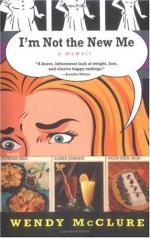Before the winter was ended he had become the most popular man in New Salem. Although in February, 1832, he was but twenty-two years of age, had never been at school an entire year in his life, had never made a speech except in debating clubs and by the roadside, had read only the books he could pick up, and known only the men who made up the poor, out-of-the-way towns in which he had lived, “encouraged by his great popularity among his immediate neighbors,” as he says himself, he decided to announce himself, in March, 1832, as a candidate for the General Assembly of the State.
[Illustration: Zachary Taylor.
At the breaking out of the Black Hawk war, Zachary Taylor, afterwards general in the Mexican War, and finally President of the United States, was colonel of the First Infantry. He joined Atkinson at the beginning of the war, and was in active service until the end of the campaign.]
A CANDIDATE FOR THE GENERAL ASSEMBLY.
The only preliminary expected of a candidate for the legislature of Illinois at that date was an announcement stating his “sentiments with regard to local affairs.” The circular in which Lincoln complied with this custom was a document of about two thousand words, in which he plunged at once into the subject he believed most interesting to his constituents—“the public utility of internal improvements.”
[Illustration: Bowling Green’s house.
From a photograph taken for this Magazine.
Bowling Green’s log cabin, half a mile north of New Salem, just under the bluff, still stands, but long since ceased to be a dwelling-house, and is now a tumble-down old stable. Here Lincoln was a frequent boarder, especially during the period of his closest application to the study of the law. Stretched out on the cellar door of his cabin, reading a book, he met for the first time “Dick” Yates, then a college student at Jacksonville, and destined to become the great “War Governor” of the State. Yates had come home with William G. Greene to spend his vacation, and Greene took him around to Bowling Green’s house to introduce him to “his friend, Abe Lincoln.” Unhappily there is nowhere in existence a picture of the original occupant of this humble cabin. Bowling Green was one of the leading citizens of the county. He was County Commissioner from 1826 to 1828; he was for many years a justice of the peace; he was a prominent member of the Masonic fraternity, and a very active and uncompromising Whig. The friendship between him and Lincoln, beginning at a very early day, continued until his death in 1842.—J. McCan Davis.]




